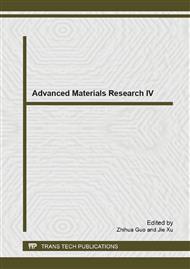p.288
p.293
p.300
p.305
p.311
p.316
p.323
p.328
p.332
Mathematical Modeling of CSTR Bioreactor Control for Production of Recombinant Protein
Abstract:
Fermentation process using recombinant strain for production of recombinant protein is widely used in commercialization of the biotechnologies. The continuous stirred tank reactor (CSTR) is a typical microbial cultivation method, has the major advantage of high productivity. Mathematical modeling and simulation is useful for analysis and optimization of the CSTR fermentation process. Most of the mathematical models developed for CSTR are black box models without information of the intracellular dynamics and regulations. In this research, a mathematical model is built based on gene regulation for recombinant protein production using CSTR, and simulation is made using this model.
Info:
Periodical:
Pages:
311-315
Citation:
Online since:
February 2014
Authors:
Keywords:
Price:
Сopyright:
© 2014 Trans Tech Publications Ltd. All Rights Reserved
Share:
Citation:


